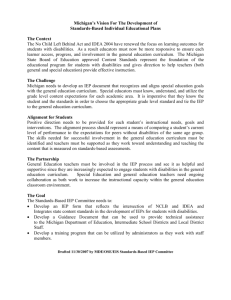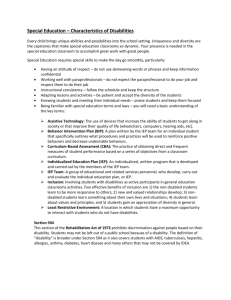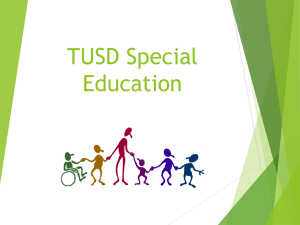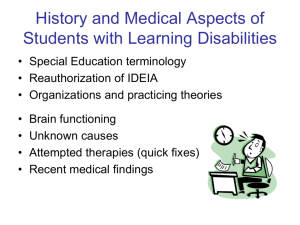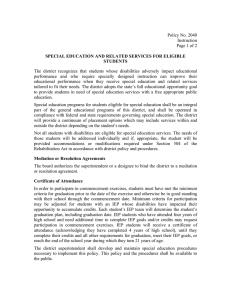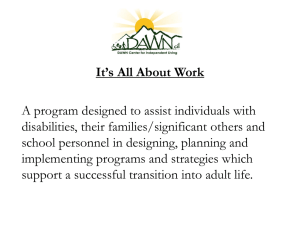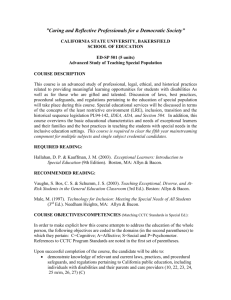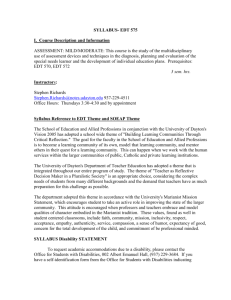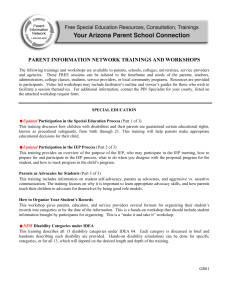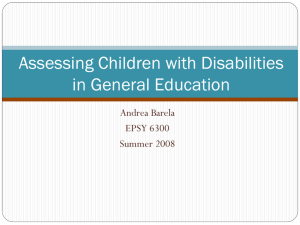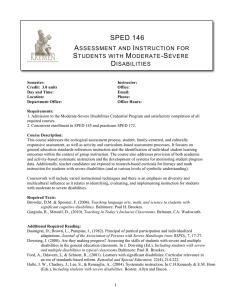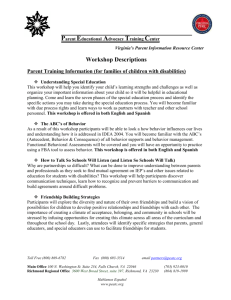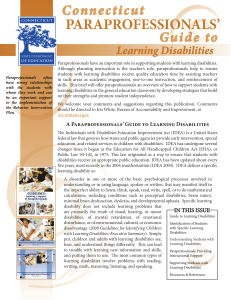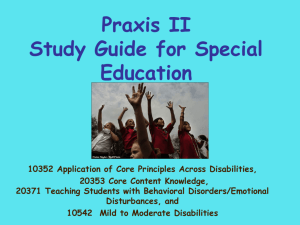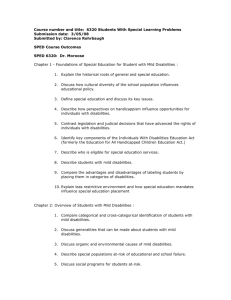Teaching Students With Disabilities
advertisement
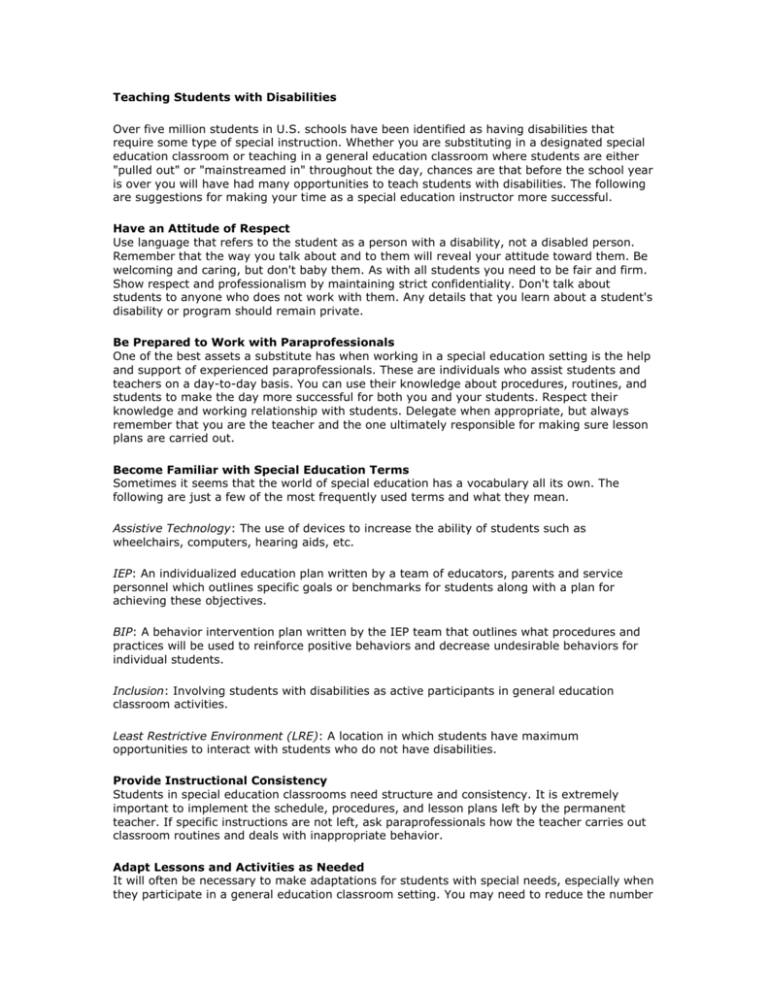
Teaching Students with Disabilities Over five million students in U.S. schools have been identified as having disabilities that require some type of special instruction. Whether you are substituting in a designated special education classroom or teaching in a general education classroom where students are either "pulled out" or "mainstreamed in" throughout the day, chances are that before the school year is over you will have had many opportunities to teach students with disabilities. The following are suggestions for making your time as a special education instructor more successful. Have an Attitude of Respect Use language that refers to the student as a person with a disability, not a disabled person. Remember that the way you talk about and to them will reveal your attitude toward them. Be welcoming and caring, but don't baby them. As with all students you need to be fair and firm. Show respect and professionalism by maintaining strict confidentiality. Don't talk about students to anyone who does not work with them. Any details that you learn about a student's disability or program should remain private. Be Prepared to Work with Paraprofessionals One of the best assets a substitute has when working in a special education setting is the help and support of experienced paraprofessionals. These are individuals who assist students and teachers on a day-to-day basis. You can use their knowledge about procedures, routines, and students to make the day more successful for both you and your students. Respect their knowledge and working relationship with students. Delegate when appropriate, but always remember that you are the teacher and the one ultimately responsible for making sure lesson plans are carried out. Become Familiar with Special Education Terms Sometimes it seems that the world of special education has a vocabulary all its own. The following are just a few of the most frequently used terms and what they mean. Assistive Technology: The use of devices to increase the ability of students such as wheelchairs, computers, hearing aids, etc. IEP: An individualized education plan written by a team of educators, parents and service personnel which outlines specific goals or benchmarks for students along with a plan for achieving these objectives. BIP: A behavior intervention plan written by the IEP team that outlines what procedures and practices will be used to reinforce positive behaviors and decrease undesirable behaviors for individual students. Inclusion: Involving students with disabilities as active participants in general education classroom activities. Least Restrictive Environment (LRE): A location in which students have maximum opportunities to interact with students who do not have disabilities. Provide Instructional Consistency Students in special education classrooms need structure and consistency. It is extremely important to implement the schedule, procedures, and lesson plans left by the permanent teacher. If specific instructions are not left, ask paraprofessionals how the teacher carries out classroom routines and deals with inappropriate behavior. Adapt Lessons and Activities as Needed It will often be necessary to make adaptations for students with special needs, especially when they participate in a general education classroom setting. You may need to reduce the number of pages, questions, or level of difficulty, use lots of examples, model procedures several times, provide one on one assistance, allow breaks between assignments, breakdown a large task into several smaller ones, and increase confidence, compassion, and cooperation by reinforcing success. By being sensitive to the different needs and abilities of students, you will be able to make appropriate adaptations throughout the school day. Additional Things to Keep in Mind As you get to know your students and try to meet their individual needs, keep the following guidelines in mind. Follow the lesson plans as outlined. They have been written by the permanent teacher who knows the student and how best to meet their IEP goals. Locate yourself in close proximity to students so you can monitor progress, offer assistance and help students stay focused. Say the student's name to get their attention before giving a direction. (i.e. "Shelby, please put your paper in the basket," rather than, "Please put your paper in the basket Shelby.") You may need to repeat yourself more often. Be patient. Check for understanding. Ask students questions to make sure they understand assignments and instructions. Be flexible. Student schedules often change as they transition in and out of general education settings throughout the day. Look for and praise even small successes in thinking, behavior, and correct answers. If a student responds with an incorrect answer, provide clues and follow-up questions to help them think of the correct answer. Deal with students individually and privately if problems arise. Don't single them out in front of the entire class. Keep instructional tasks short and varied. Allow students to use learning aids to assist them as outlined by the permanent teacher. Check with a paraprofessional, principal or other teacher before using any specialized equipment or machines. Don't hesitate to ask for help if you have questions or concerns during the day.


